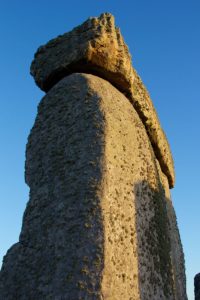Your Cold Side
Time to make tracks
In winter’s first snow.
Breathe in the first blast
Of winter’s cold.
Touch winter
As winter touches you.
It is your cold side.
Your side
Of short days and long nights.
And welcome to the shortest day and longest night of the year. There will be approximately 9.5 hours of daylight today (Dec. 21) and 14.5 hours of darkness. The good news – tomorrow the days will begin getting longer. And tomorrow and tomorrow and tomorrow, at a seemingly petty pace till one day in March we look up and it’s 7 p.m. and still daylight.
But these days of long nights have always had an imprint on the human psyche. No one knows for sure how far back into pre-history winter solstice celebrations occurred but the oldest documented celebration is the Indian celebration of Sankranti that dates back between 20,000 to 30,000 years. Some of the greatest architecture of ancient cultures is associated with the solstices and/or equinoxes. Newgrange, a megalithic site in Ireland was constructed in 3,200 B.C. this precedes Stonehenge by about 200 years. Maeshowe, another megalith aligned with the solstice was constructed on the Orkney Islands around 2,500 B.C.
Perhaps the main irony connected with this season of short days and long nights (at least in the Northern Hemisphere) is the fact that we are about three million miles closer to ole Sol now than in the dog days of summer. Our winter solstice is the time we are tilted farthest from the rays of the sun. Because of this tilt the sun never appears very high above the horizon nor stays above it very long. Solstice literally means, “standing-still-sun” and for about a week around the winter solstice the sun appears to rise at nearly the same point on the horizon.
Solstice celebrations from around the world have been woven into our current winter celebration. Whether you celebrate Christmas, Hanukkah, Kwanzaa, Three Kings Day, etc., the idea of Yule logs, evergreens and gift giving are all holdovers from solstice celebrations. So regardless of “official” holiday you celebrate this month know that (especially in the northern hemisphere) before there was Jesus, before there was Mohammed and before there was Buddha there was acknowledgement and observation of the winter solstice. And there was celebration of the rebirth of day and the rekindling of the sun’s warmth. And tomorrow the earth will once again begin to roll towards that warmth and light.
The ancient Cherokee believed evergreens were created to remind us summer will return. According to Cherokee myth when the plants and trees were created by the Great Sun they were asked to stay awake for seven days and seven nights. But by the third day most of the small plants and many of the trees had succumbed to sleep. On the seventh dawn the Great Sun stepped out of his wigwam and looked down. Only the laurel, pine, spruce, fir, cedar and hemlock were still awake. The Great Sun was pleased and said, “You shall be given a gift. All of the other plants and trees will lose their leaves and sleep the winter long, but you shall never lose your leaves. You will provide a shelter to the birds and animals during the harshest winds, and you will remind the people that even during the darkest times something remains. You shall be evergreen.”
Happy Solstice!


Beautifully written perspective – wisdom from the ages. Thanks, can I
share on facebook?
Of course, sorry I haven’t checked messages here in awhile – ciao